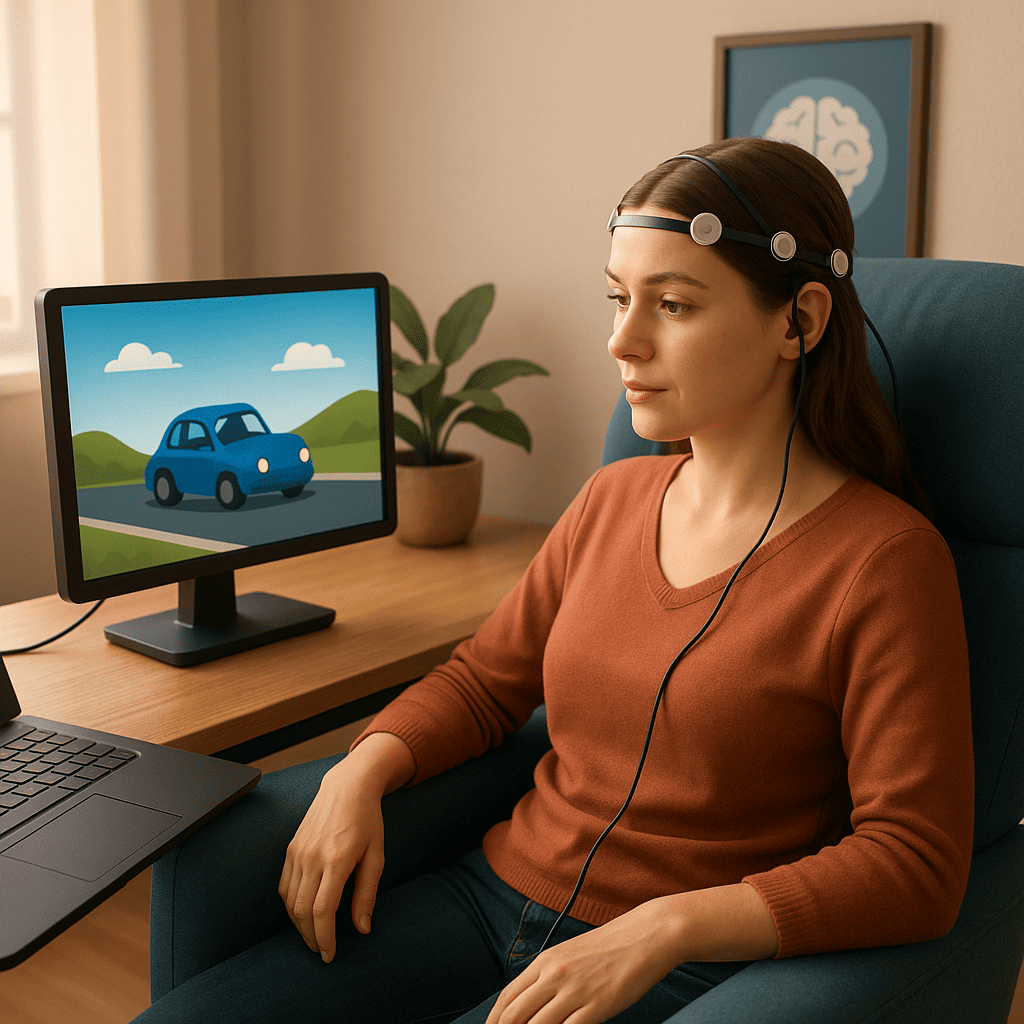Neurofeedback for Emotional Issues
 Emotions are the heart of human experience. They help us connect, empathize, and respond to life’s challenges. But when emotions become overwhelming, unstable, or difficult to control, daily life can feel like an uphill struggle. Conditions like anxiety, depression, mood swings, irritability, or trauma-related distress often stem from disruptions in how the brain regulates emotions.
Emotions are the heart of human experience. They help us connect, empathize, and respond to life’s challenges. But when emotions become overwhelming, unstable, or difficult to control, daily life can feel like an uphill struggle. Conditions like anxiety, depression, mood swings, irritability, or trauma-related distress often stem from disruptions in how the brain regulates emotions.
This is where neurofeedback can play a unique role.
The Brain and Emotional Regulation
Emotional balance depends on several brain networks:
-
Frontal Lobes – involved in decision-making, mood control, and impulse regulation.
-
Limbic System (amygdala, hippocampus) – processes fear, pleasure, and emotional memory.
-
Anterior Cingulate Cortex – helps shift between emotional states and regulate attention.
When these circuits are overactive (as in anxiety) or underactive (as in depression), emotional regulation suffers. Neurofeedback helps restore balance by training specific brainwave patterns.
How Neurofeedback Helps Emotional Issues
1. Anxiety Disorders
-
Many people with anxiety show excess fast-beta waves (linked with overthinking and hyperarousal).
-
Neurofeedback teaches the brain to reduce beta and enhance alpha rhythms (relaxed alertness).
-
Patients often report calmer breathing, reduced restlessness, and better sleep.
2. Depression
-
Research shows some depressed patients have frontal alpha asymmetry (less activity on the left frontal lobe).
-
Neurofeedback aims to balance this by enhancing left-sided activity.
-
Results include improved mood, more motivation, and emotional resilience.
3. Emotional Dysregulation
-
Seen in conditions like borderline personality disorder or trauma.
-
Neurofeedback supports self-soothing and builds tolerance to distress.
-
Patients gain better control over irritability, anger outbursts, and mood swings.
4. Trauma & PTSD
-
Trauma often locks the brain into hypervigilance, with excessive beta and suppressed calming rhythms.
-
Training helps the brain feel safe again, reducing nightmares, hyperarousal, and intrusive thoughts.
A Real-Life Example
Priya, a 28-year-old woman, came with long-standing anxiety and emotional ups-and-downs. In sessions, she trained her brain to increase alpha rhythms. Initially, she found it hard to relax, but by her 10th session, she noticed she could fall asleep faster. By session 20, she described feeling “less hijacked by emotions” and more in control of her reactions.
Her friends noticed the change too — “You seem calmer, like you’ve found balance.”
The Advantages
-
Drug-free: Useful for those who don’t tolerate medication well.
-
Skill-building: Teaches the brain long-lasting self-regulation.
-
Complementary: Can be combined with therapy (CBT, DBT, mindfulness).
Conclusion
Neurofeedback offers a gentle yet powerful way to train the brain for emotional balance. By calming overactive circuits and strengthening underactive ones, it helps people regain control over anxiety, depression, irritability, and trauma-related distress.
It doesn’t replace therapy or medication, but it adds a unique dimension — helping patients feel empowered to regulate their own mind.
In the next article, we’ll explore limitations, myths, and the future of neurofeedback.
✨ Written by Dr. Srinivas Rajkumar T, MD (AIIMS, New Delhi), DNB, MBA (BITS Pilani) – Consultant Psychiatrist, Chennai.
📍 Practice Locations:
-
Apollo Clinic, Velachery, Opp. Phoenix Marketcity, Chennai
-
Kumar’s Healthcare, Chromepet (Near Tambaram, Pallavaram), Chennai
📞 Contact: 8595155808